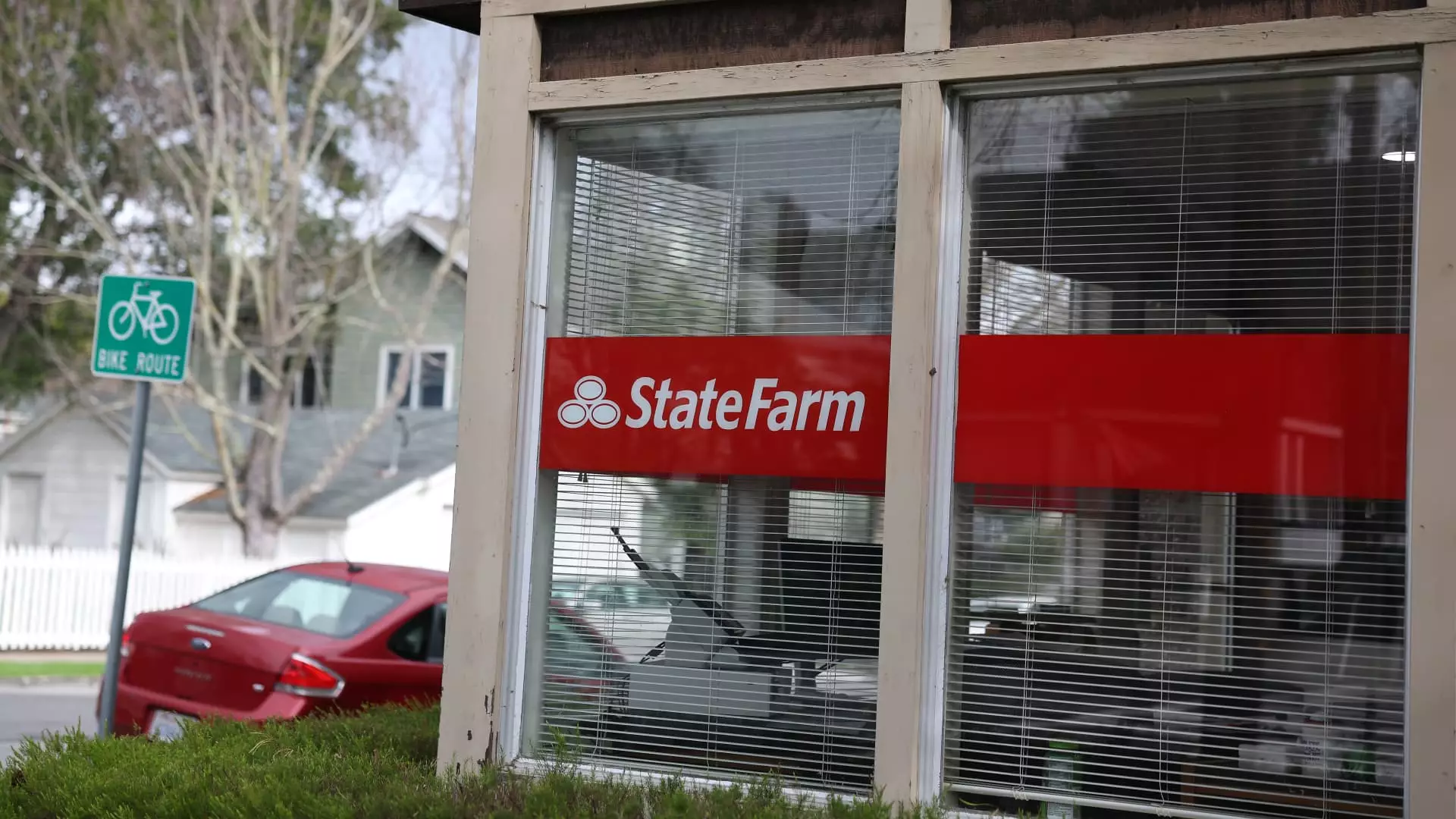State Farm’s recent push for a staggering 17% rate increase for homeowners in California has ignited a firestorm of debate, reminiscent of the recent wildfires that wreaked havoc in Los Angeles. While insurers have long been struggling under financial duress, the current proposal raises profound questions about the sustainability of leaving vulnerable populations at the mercy of corporate interests. What we need is a critical examination of the entire insurance landscape, which, like the aftermath of a wildfire, reveals charred remnants of what was once a viable safety net for families.
The insurer is claiming that increased rates are essential to bolster its dwindling capital reserves. But let’s look deeper: this request is but a symptom of a much larger crisis. In 2022, California experienced its costliest natural disaster, resulting in a staggering $275 billion in losses. State Farm General, which insures about 3 million homes—approximately 20% of the state’s homeowners—has paid out almost $2.75 billion in claims from these catastrophic events. With each new disaster, the stakes get higher and the safety nets weaker. A business model dependent on continuous rate increases sends a chilling message: disaster preparedness is a secondary thought compared to profit margins.
The Iceberg Looming Over Californian Insurers
An attorney for the California Department of Insurance astutely likened State Farm’s position to that of the Titanic, with an iceberg of financial instability in sight. This metaphor perfectly encapsulates the precarious balancing act facing the insurance sector. If State Farm is indeed at risk of sinking, then approximately 3 million policyholders will be left adrift without adequate coverage—as if they were cast into lifeboats that are both too few and too flimsy.
What’s alarming is the increasing reluctance of insurers to offer new policies or renew existing ones. State Farm has already made the jarring decision to stop writing new homeowners’ policies altogether and ceased renewing 72,000 policies in the last year alone. The threat of widespread denial of coverage looms ever larger, and the implications for the average Californian—especially low-income residents—are dire. We must ask why an entity so engrained in the fabric of American society, one responsible for protecting homes, should make the lives of millions hang by a thread.
The Political and Economic Battleground
California Insurance Commissioner Ricardo Lara’s cautious approach to rate hikes, while noble in his intent to protect consumers, may be misguided. Striking a balance between safeguarding the insurance industry and protecting the public’s pocketbook is difficult, especially when public sentiment is rapidly shifting against companies perceived as prioritizing profits over life’s fundamental needs. The recent suggestion by independent economist David Appel that State Farm’s rate increase might restore financial stability only illustrates how deeply entangled these entities are in our broader economic woes.
Consumer advocacy organizations, like Consumer Watchdog, have staunchly opposed State Farm’s recent requests, arguing that the company has not provided sufficient justification for its proposed increase. Their concerns echo the sentiment of frustrated consumers who are beginning to recognize that sustained economic volatility accompanies years of insufficient regulation and corporate greed. William Pletcher, the advocacy group’s attorney, aptly points out the inconsistency and lack of transparency in State Farm’s approach. The debt of trust that insurance companies have built over decades seems to erode with every announcement of rate hikes or rescinded policies.
The Risk of Leaving Communities Vulnerable
The cancer of instability in California’s insurance sector extends beyond mere numbers—it reverberates through communities. As wildfires ravage properties and economic woes compound, we face a societal imperative: how do we safeguard the most vulnerable among us? Comprehensive solutions must offer a coherent framework that includes not only potential rate adjustments but also innovative insurance practices that encompass catastrophe modeling and transparency in financial reporting.
The Sustainable Insurance Strategy currently in play offers a glimmer of hope, but it needs urgent implementation to re-establish a culture of accountability within the insurance industry. Janet Ruiz of the Insurance Information Institute emphasizes that addressing systematic issues today will pave the way for a more stable future marketplace. Simply allowing corporations to dictate terms without oversight will invite further financial ruin for consumers.
The stakes could not be higher. California’s homeowners are urging regulators to realize that our safety nets must be stronger than the whims of corporate strategy. We stand at a crossroads; rather than continue surrendering to tumultuous market forces, we must demand a more equitable approach that genuinely prioritizes the welfare of all—before it’s too late.

